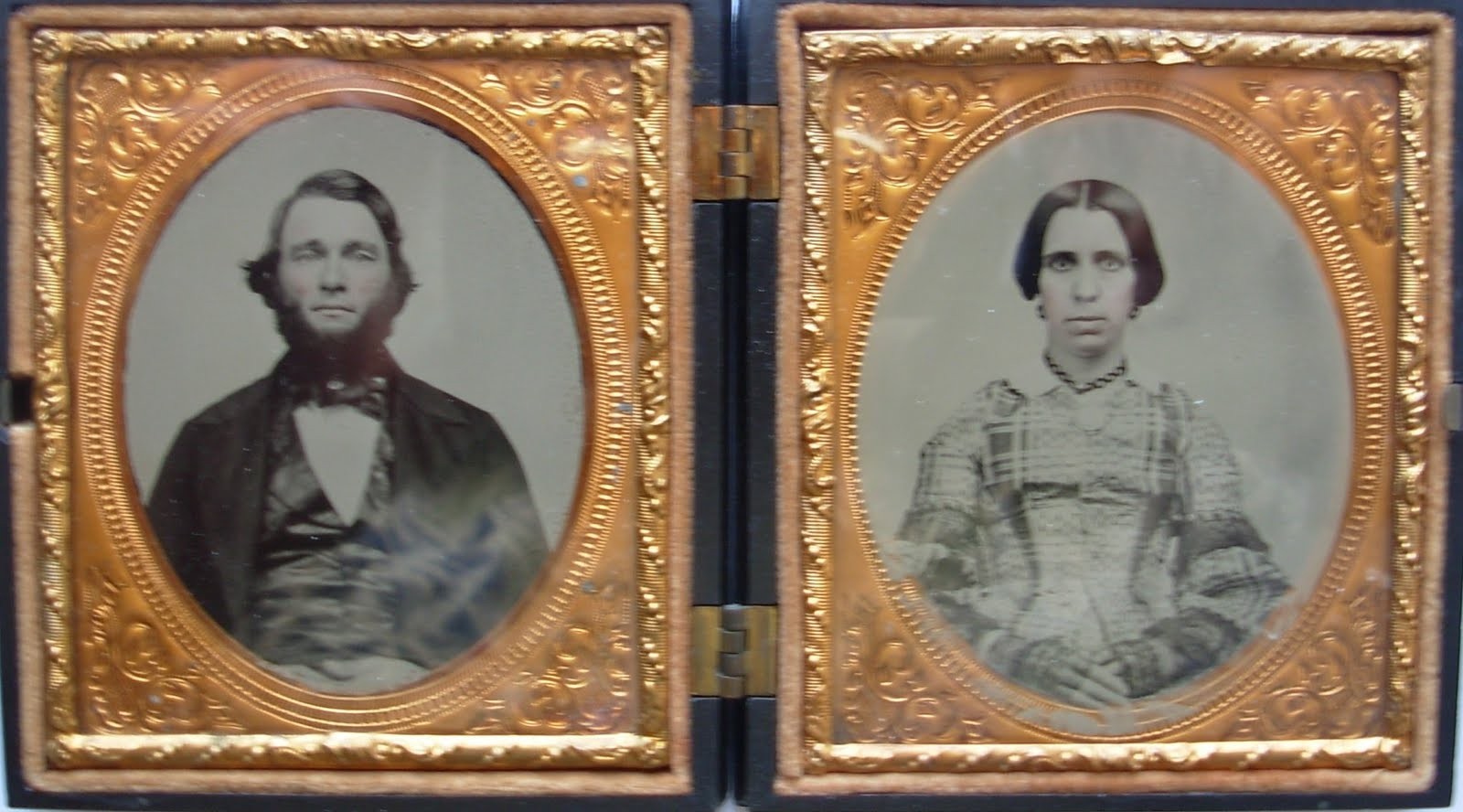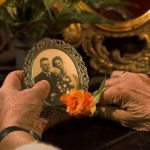Every family history researcher knows that before there were selfies and belfies, there were ambrotypes and tintypes. Before everyone owned at least one camera, photos were left to the professional skilled photographer. Capturing images was usually reserved for special occasions such as weddings. Early photography was expensive and photographers were rare.
A photograph is a rare glimpse into a moment in time. It should be analyzed, preserved and shared with a living relative. But because every family history researcher has at least one image where a person is unidentified, we need to look at how to solve this problem.
To help the family history researcher learn how to solve the mystery of unidentified photos, this RecordClick genealogist has chosen a pair of images from the personal family tree to analyze, preserve and share.
To paraphrase detectives, this first thing this family history researcher will ask is:
To create such a valuable heirloom,
- Who had the means?
- Who had the opportunity?
- Who had the motivation?
In my genealogical search, I have found that the photographs we will discuss here were in my maternal grandparents’ home. This genealogical search information narrows the possibilities to four family lines:
- Thrasher
- Wilson
- Rasor
- Juday.
From my ancestor search files, let’s see what else I can glean from the photos. For a family history researcher to analyze an object, you need to record your observations and use these observations to date the photograph.
Here are my preliminary Observations:
1) The size of the photos are 2 x 2 inches.
2) The photos are of a man and a woman.
3) They are set in a case that is a) small b) black c) hinged d) plastic and each picture has a gold mat.
4) Upon removing the pictures from the case, I noted the woman is a tintype and the man is in an ambrotype.
5) According to the information search of this family history researcher, I have found that Ambrotypes were taken only for ten years, between 1855-1865, and that tintypes were made from 1856 into the 1900s.
6) I did not observe any markings on the photos or any indication of who the photographer was.
7) The only inscription in the case was: Littlefield, Parsons & Co. Again, this family history researcher has found information that shows this company to have been a manufacturer of Daguerreotype cases. Patented 1856 and 1857. In my genealogical research I have also found that they cost $1.56.
Here is the family history researcher information on the Dating of the images:
1) The fashions in which the subjects appear often will lead the family history researcher to ascertain a time period.
2) The woman in my genealogical search example is wearing a 1860s style dress that is in a style that was popular in the 1860s. The man is wearing a suit that is reminiscent of the style popular in the 1860s, also.
3) The woman appears to be posed in a seated position with her left hand displayed in the forefront and is displaying a ring.
These are the genealogical search Detective Questions:
- Who had the Means: Who had the money to purchase an expensive photo? The 1850 and 1860 U.S Census can give the family genealogist an important clue into your ancestor’s financials.
- Who had the Opportunity: Who had access to a photographer? A city directory of the location where your ancestors lived could lead to valuable clues.
- Who had the Motivation: What was the probable occasion? Based on the woman’s pose, this family history researcher is concluding that these images were from a marriage event.
The conclusion summary of this family history researcher:
Based on my Observations:
- I would date these photos about 1860s.
- I believe the occasion was a wedding.
- After researching the four possible lines for marriage dates, I eliminated the Thrasher family line. The Wilson family line is a possibility because this genealogical researcher’s ancestor married twice and the second marriage was 1866 which could explain the two different types of photographs. The ancestors in the Rasor family line married in 1858 and the ancestors in the Juday family line married in 1865.
How this family history researcher plans to Preserve the image:
- This family history researcher scanned the originals photos using the tiff format and saved it to a removable storage device, such as a USB flash drive or DVD.
- The tiff image format has been chosen by this family history researcher because it is used to preserve high quality pictures resulting in a large file size. Tiff images can be converted to a smaller format for printing or manipulation.
- Now that this RecordClick genealogist has analyzed the photographs and preserved the originals, it is time to open my toolbox and find someone with whom I may share these wonderful genealogical search findings. Since I haven’t conclusively narrowed down the families, this family history researcher will look for living relatives from all the family lines.
Finding A Living Relative
1) Census The U.S. Census is taken every 10 years and is a good way to skip through time. For example the Juday family ancestors, one of my probable lines, were in Elkhart County, Indiana in 1860. Skipping through the decades to 1900, I found the family in Kosciusko County, Indiana with three children. One of the daughters, Clara Juday married a man named Roop and had two children. In the 1940 census, which is the latest available census, I found the household of Raymond Roop in Kalamazoo, Michigan with two children: Richard and Marilyn.
2) Marriage According to my genealogical search information, Marilyn married William Bennett.
3) Obituary A search for her obituary revealed that Marilyn died in 2001 in Michigan. It listed several survivors. This obituary lists the survivors, the relationship and a location at that time. For example, Nathan Bennett was listed as a grandchild living in Mackinaw City, Michigan.
4) People Smart Armed with this information, I entered the name and the location into PeopleSmart, a free people search database and public records website. I learned that Nathan Bennett is 26 living in Mackinaw City and William Bennett is listed as a possible relative.
5) Switchboard One of the many online phone directories, confirmed that he is living in Mackinaw City, Michigan and gave me a phone number and an address.
The RecordClick professional family history researchers will work with you to analyze and preserve your family images. We will locate living relatives to identify images with you.








